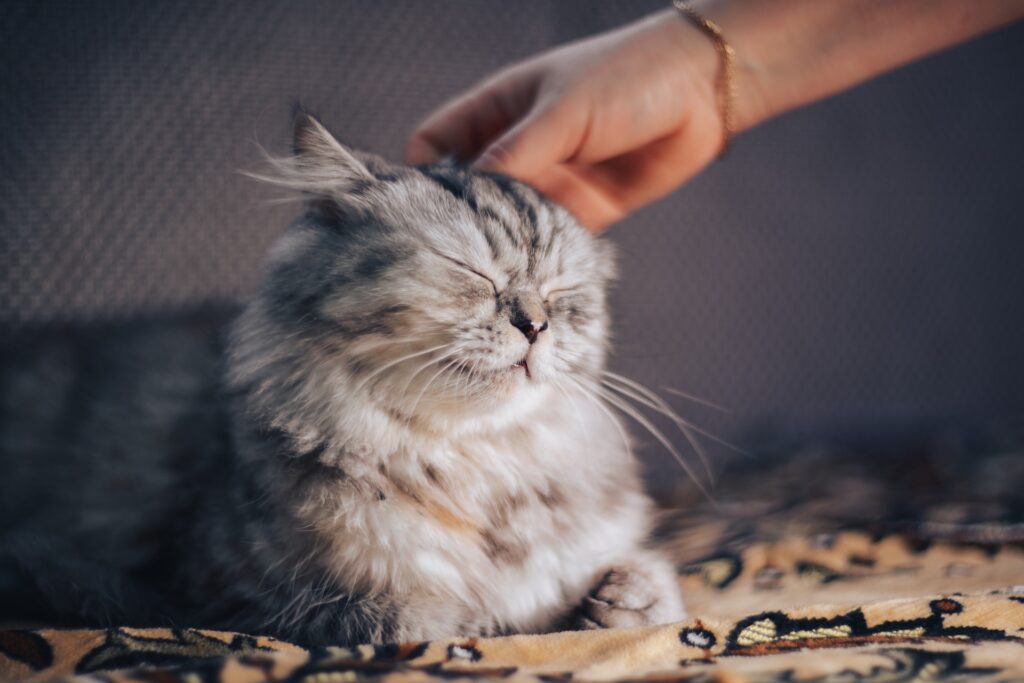The moment I laid eyes on my first Himalayan cat, it was love at first sight. Their luxurious coat, piercing blue eyes, and serene demeanor set them apart in the feline world. However, owning a Himalayan cat comes with a responsibility that extends beyond admiration.
My journey has taught me the importance of understanding their unique health challenges.
Today, I’m here to share insights into 10 common Himalayan cat health problems, emphasizing early detection and proactive care to ensure these majestic creatures lead a full, healthy life.

source(visit)
1. Hereditary Cataracts
Diving into the depths of my Himalayan’s gaze, I learned about hereditary cataracts, a veil that can obscure their stunning eyes.
This condition, where the lens of the eye becomes cloudy, can significantly affect their vision. Genetic predisposition means that Himalayans can inherit this issue from their ancestors.
Spotting the early signs, such as a noticeable cloudiness or difficulty in navigation, is crucial. Genetic testing has emerged as a beacon of prevention, alongside surgical interventions that promise a return to clarity.
2. Upper Respiratory Issues and Tear-Staining (Epiphora)
My fluffy companion’s snuffles and tear tracks were not just signs of their endearing personality but hinted at underlying health issues. Himalayan cats, with their distinctive faces, are prone to upper respiratory problems and tear-staining, known medically as epiphora.
These conditions are intertwined, often a result of their brachycephalic structure. Recognizing symptoms early and maintaining a clean, allergen-free environment has been key in managing their health.
Regular vet check-ups ensure that my Himalayan breathes easier and stays tear-free.
3. Corneal Abrasions/Ulcers and Corneal Sequestration
The twinkle in my Himalayan’s eye dimmed when they faced the pain of corneal abrasions and the threat of corneal sequestration.
These eye conditions, resulting from scratches or deeper lesions, can lead to significant discomfort and vision problems. Awareness of their symptoms, such as squinting or excessive tearing, propelled me to seek immediate veterinary care.
Treatment options vary, but early intervention can prevent further complications, preserving the window to their soulful eyes.
4. Polycystic Kidney Disease (PKD)
PKD’s silent progression in Himalayans was a wake-up call to the importance of genetic awareness.
This inherited condition, characterized by the development of cysts in the kidneys, can lead to kidney failure if unchecked.
Genetic testing before breeding and regular health screenings for my Himalayan have become non-negotiable, ensuring a proactive stance against this stealthy adversary.

5. Heart Disease, Including Hypertrophic Cardiomyopathy (HCM)
The heart of a Himalayan, both figuratively and literally, can be a source of concern.
HCM, a form of heart disease that thickens the heart’s walls, is particularly worrisome. Tuning into the subtle signs, such as lethargy or rapid breathing, has been crucial.
With regular echocardiograms and a heart-healthy diet, I’ve learned to navigate this challenging terrain, ensuring my Himalayan’s heart beats strong and true.
6. Feline Asthma
Witnessing my Himalayan’s struggle for breath during an asthma attack was a stark reminder of their vulnerability.
Environmental allergens can trigger these distressing episodes, emphasizing the need for a clean, stable environment.
Management strategies, including medication and minimizing stress, have become integral to ensuring my Himalayan’s lungs remain clear and their purrs, uninterrupted.
7. Urinary Problems Causing Bloody Urine (FLUTD or Bladder Stone)
The alarm bells rang when I noticed bloody urine, a sign of FLUTD or bladder stones.
These urinary issues can cause significant discomfort and health risks for Himalayans.
Immediate veterinary intervention, dietary adjustments, and ensuring a stress-free environment have been pivotal in managing and preventing these painful conditions.
8. Dental Malocclusions
The discovery of dental malocclusions in my Himalayan’s mouth highlighted the importance of oral health.
Misalignments can lead to difficulty eating and oral pain.
Regular dental check-ups and cleanings, alongside a balanced diet, have been key in addressing and preventing dental woes, ensuring my Himalayan’s smile remains as enchanting as their personality.
9. Brachycephalic Airway Syndrome Causing Breathing Difficulties
The unique facial structure of my Himalayan, while adorable, predisposes them to brachycephalic airway syndrome.
Observing their breathing closely and maintaining an ideal weight has been essential in minimizing the impact of this condition. Surgical options exist, but preventative care remains my focus, allowing my Himalayan to breathe with ease.
10. Ringworm Fungal Infection
Ringworm, a deceptive name for a fungal skin infection, tested our resilience. This contagious issue necessitated strict hygiene practices and medical treatment.
Overcoming this challenge together, we emerged stronger, with a deeper understanding of the importance of vigilance in preventing its spread.
Conclusion
Embarking on this journey with my Himalayan cat has taught me the significance of awareness, early detection, and proactive care in navigating their health challenges.
By sharing our story, I hope to empower other Himalayan cat owners to take an active role in their pet’s health. Together, let’s ensure our majestic companions receive the love and care they deserve, fostering a long, healthy, and joyful life side by side.
Remember, a vigilant eye and a caring heart are the keys to unlocking a fulfilling life with your Himalayan cat.

Frequently Asked Questions
What is the most common cause of death in indoor cats?
Cats commonly face kidney disease, a significant health concern that can lead to fatal outcomes if not addressed promptly. Recognizing the symptoms is vital to providing timely support and care for your feline companion.
What diseases do house cats carry?
Cat scratch disease, Roundworms, Toxoplasmosis, Rabies, Campylobacteriosis, Salmonellosis, Cryptosporidiosis.
How can I tell if my Himalayan cat has hereditary cataracts?
Look for signs of cloudiness in their eyes, noticeable changes in vision, or difficulty navigating their environment. Early detection through regular veterinary eye exams is crucial.
What are the best ways to manage upper respiratory issues and tear-staining in Himalayan cats?
Maintain a clean, allergen-free living space, and seek regular veterinary advice. Managing weight and avoiding stress can also help minimize symptoms.
How is Polycystic Kidney Disease (PKD) detected in Himalayan cats?
PKD can be detected through genetic testing and regular ultrasound screenings. Early detection is key to managing the disease effectively.
Can heart disease in Himalayan cats be prevented?
While genetic factors play a significant role, maintaining a healthy diet, ensuring regular exercise, and keeping up with routine veterinary check-ups can help manage risk factors for heart disease.
What should I do if I suspect my Himalayan cat has a ringworm infection?
Isolate your cat to prevent the spread of the infection, and consult your veterinarian immediately for diagnosis and treatment options. Maintaining good hygiene and cleaning your living environment are essential steps in managing ringworm.


